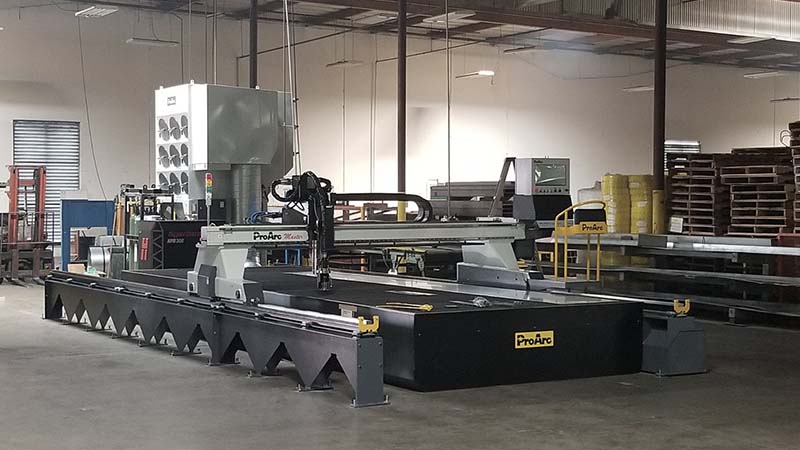Every industrial company reaching out for growth eventually would need a heavy-duty plasma cutting system.
If your company right now owns a medium-duty plasma cutting system, you are a good candidate to buy a heavy-duty one, in the short term.
This is because your cutting needs, as many industrial operations, can increase rapidly as your company grows bigger.
But before exploring in detail what a heavy-duty plasma cutting system is and how to choose one, let’s take a look at all the cutting systems available out there.
What cutting systems are there?
Plasma cutting is by far the most widely used cutting system in the industry. But it is by no means the only one. In fact, it took quite a few years since it was created until it became the industry standard. Let’s look at other cutting systems that continue to exist today.
Oxyfuel
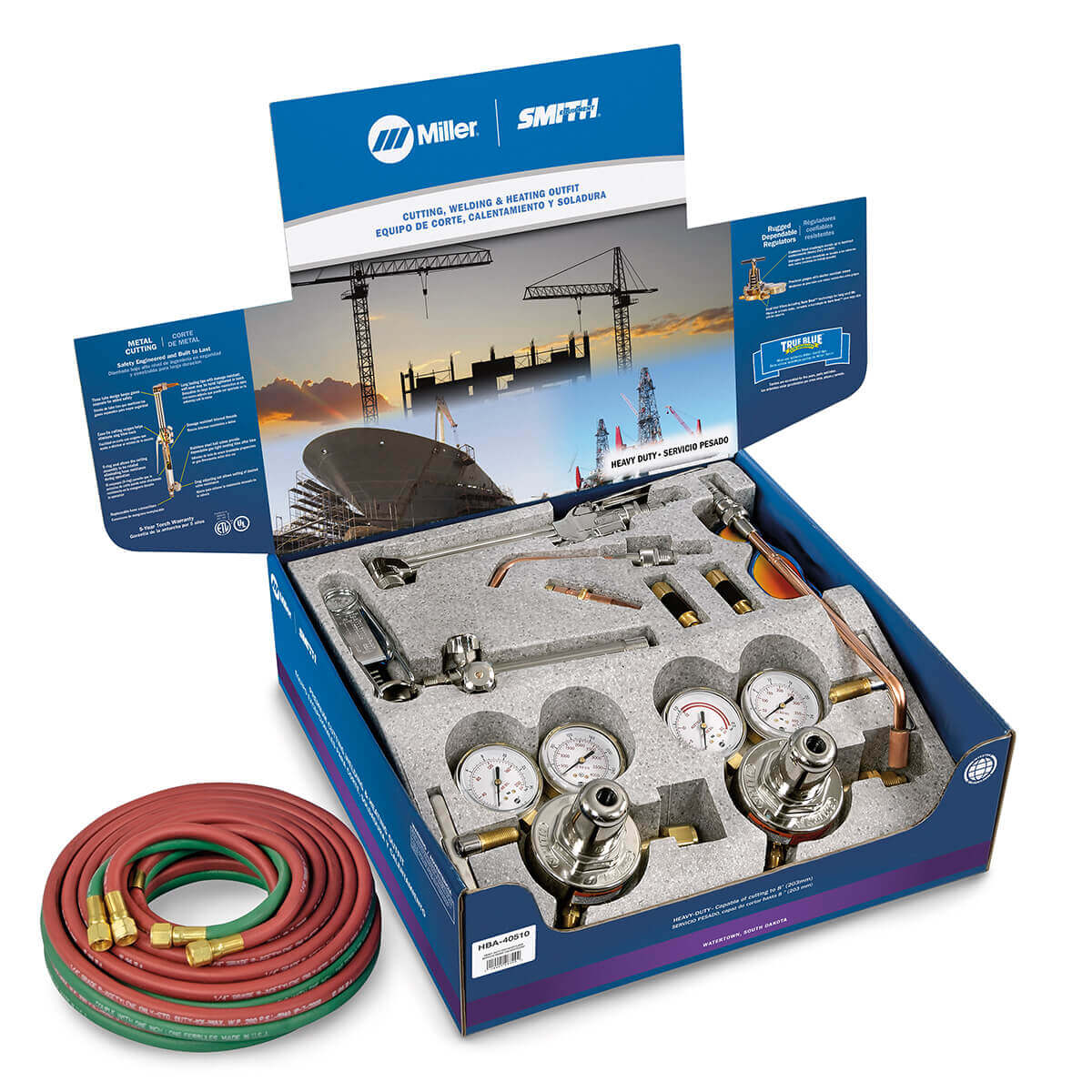
Oxyfuel is the oldest cutting system used for industrial purposes.
In this process, a chemical reaction is created by the oxy-fuel torch between the oxygen and the steel.
This produces an extremely hot temperature (around 1,800°F) so the metal softens and then melts.
Some gases are required for this process, but electrical power is not needed.
Laser cutting
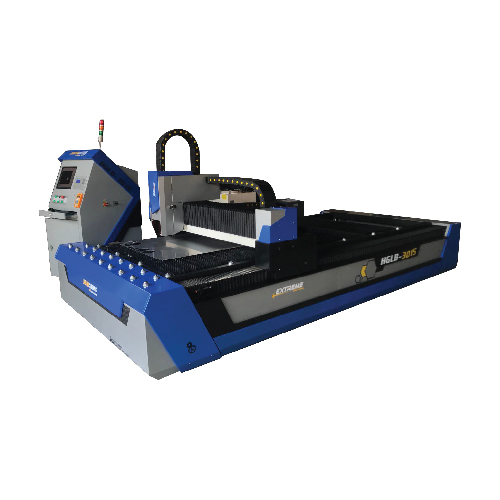
In this process, a high-power laser beam is targeted to the material to be cut. Again, it reaches such a high temperature that melts the metal.
Some gas blows away the waste. That is why this process produces a more clean edge.
Waterjet cutting
Another cutting system available is the waterjet. This system is known as erosive because the jet of water cuts the material not by melting it, but by eroding it.
In this process, a high-pressure jet of water is thrown out through a small orifice.
This high-speed stream of water erodes the material, mainly metal or stone.
On occasion an abrasive is added to the water, depending on the application.
Plasma cutting
As stated before, plasma is the most used cutting system out there.
This system uses a high-temperature ionized gas in order to produce a hot arc that can cut any conductive material.
Usually, the jet of plasma is directed by a torch. Each torch can be suitable for some types of materials or processes.
The result is a metal cut with high precision at a low cost.
So, now is the time to get deep inside a heavy-duty plasma system.
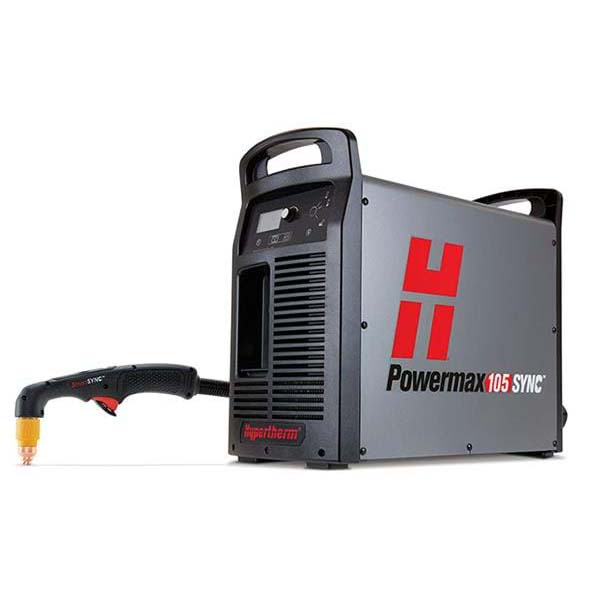
What can be considered a heavy-duty cutting system?
Most people classify plasma cutting systems as light, medium and heavy-duty.
In general terms, a handheld plasma cutting machine is considered light-duty.
A small cutting table powered by some plasma cutting machine would be a medium-duty system.
Finally, a mechanized cutting system, built-in a stronger structure and composed of one or more power sources, the ability to cut above an inch, even at high definition, at a constant speed, can be considered as heavy-duty.
But that classification is not a general rule for plasma cutting manufacturers.
For the sake of this post, as quoted before, we are considering a mechanized plasma cutting system as a heavy-duty one.
Now, especially when using a heavy-duty plasma system, safety is an issue. So, let’s consider some of it.
Safety norms when working with plasma cutting
When cutting, safety measures are essential for any operator.
Since the jet of plasma can reach temperatures of 20,000° centigrade, safety is essential.
The sparks that inevitably are going to rise or fall from the cut piece can cause some damage. Also, when cutting the piece through, the plasma produces a bright beam. So, our vision should be protected.
How to protect the operator
So, before getting started with the cutting process, any operator should wear a safety jacket, pants, and shoes. A pair of leather (intended for cutting and welding) gloves are required to protect the hands. For most operators, using a cap or bandana is a way of protecting at least a part of their heads.
Regarding safety lenses, is it required to wear at least a shade number 5. In any case, shades between 5 and 9 are suitable for cutting processes.
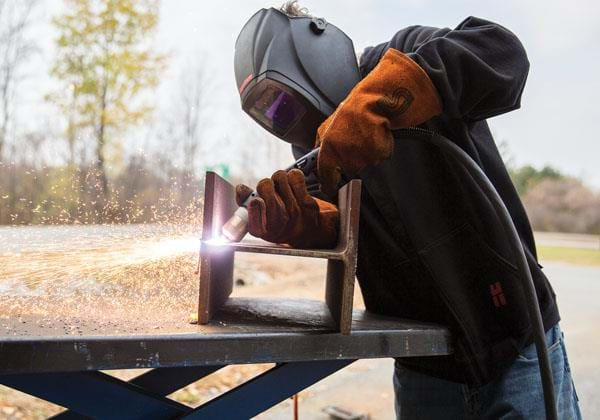
Safety tips for equipment
Much cutting equipment, especially the handheld ones, includes safety features for its uses. Some of these machines have a trigger protector, which is a plastic cover that avoids an incidental plasma jet to be shot. Other ones are built in a way that, if incorrectly assembled (nozzles, electrodes, etc.) will not work.
When working with automated cutting machines, less human contact is required, even though safety measures should be taken. Operators are still required to wear safety glasses and the rest of the safety clothes.
Automated cutting machines generally follow a program, so it is important not to interrupt it.
Also, a lot of heat can invade the metal sheet, especially in long sizes, so it is essential to be careful when touching the piece.
How to protect your health
Another big issue regarding safety is to avoid the fumes caused by the burning of the gas or gas mix. To inhale these gases on a regular basis can lead to major diseases or health problems.
It is highly recommended to set up extractors in the area where the cutting process is taking place. As well, operators are indicated to wear a mask with an interchangeable filter. Despite not being that comfortable, putting in practice these measures can help to keep operators healthy.
What consumables are used in the cutting process
Both manual and mechanized cutting operations require some consumables to function properly. Let’s look at a couple of them.
About the electrodes
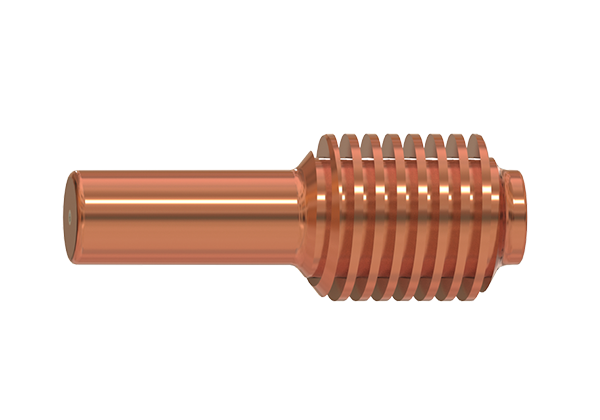
Usually, cutting electrodes are made of copper. Nevertheless, copper would melt too fast if the arc is attached directly to it.
To solve this, in many cases it contains a metal insert at the point. Tungsten is one of the preferred electrode materials. But Tungsten also has a failure. It burns up in the presence of oxygen.
So, if oxygen or compressed air is part of the cutting gas mix, another material, Hafnium or Zirconium, is used for the electrode.
About the gases
Every plasma cutting process requires a gas or gas mix to work. As well, the equipment that you are about to use may have specs regarding what gas or gas mix you should use. We highly recommend reviewing and using these specs.
In general, the most used gases are argon, argon/hydrogen, nitrogen, and oxygen.
Argon is used for plasma marking, which is a related cutting process where a metal sheet is carved instead of being completely cut to form a figure.
If the sheet to cut is thicker Stainless Steel or Aluminum (like 2 inches or more) can be used as an Argon and Hydrogen mix. But if the metal to cut is a thinner Stainless Steel sheet, a mix of Hydrogen and Nitrogen (or Methane) can work perfectly. Oxygen is used only when cutting mild steel, or ‘carbon steel’.
This is because the chemical reaction between the oxygen (in the plasma gas mix) and the base metal speeds up the cutting and the edge quality is better. The problem here is that, usually, oxygen is way too costly in comparison with other gases.
In this particular matter, there is not a “one size fits all”, this is, there is not a single combination that can work seamlessly with any type of metal or thickness. Always rely on the cutting machine manufacturer to find out which one to use.
Equipment for medium plasma cutting
Among other equipment, for a medium-duty cutting system to work properly, a cutting table, a power source, and a CNC are required. Let’s review some of these needed parts.
We recommend Hypertherm plasma power units because they have proved to be reliable, high-tech, and durable equipment. For a heavy-duty unit, depending on the cut quality required, you could be getting a MAXPRO200, XPR170, or XPR300.
Regarding the cutting table, we also have options for you. For systems of this type, we have successfully installed the ProArc Master, which is a robust cutting table with a lot of advantages.
We have several options for the CNC. In most cases, this depends on your very needs. So, we prefer to understand better your production needs to find the right CNC for you.
We encourage you to contact us immediately to discuss your cutting needs and, based on that, to configure a precise solution, customize for you.

